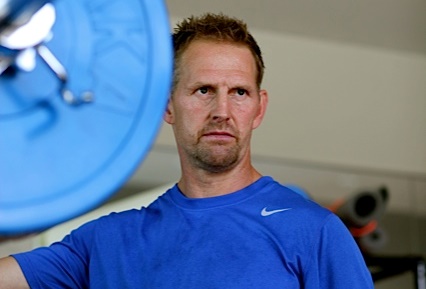Stroke rates have been declining in older people over the past 20 years — but have sharply increased in those under 55.
Researchers at Rutgers University used data from the New Jersey Department of Health on more than 227,000 hospitalizations for stroke from 1995 through 2014, calculating incidence by age over five-year periods. The findings appeared in the Journal of the American Heart Association.
Compared with the 1995-99 period, the rate of stroke in 2010-14 increased by 147 percent in people 35 to 39, by 101 percent in people 40 to 44, by 68 percent in those 45 to 49, and by 23 percent in the 50 to 54 group.
Stroke is still far more common in older people. But the rate decreased by 11 percent in those 55 to 59, by 22 percent in the 60 to 64 group, and by 18 percent in people 65 to 69.
The reasons are unclear, but the lead author, Joel N. Swerdel, now an epidemiologist with Janssen Pharmaceuticals, said that increasing obesity and diabetes in younger people are probably involved.
“For a person 30 to 50, the good news is you ain’t dead yet,” he said. “With behavioral changes, changing diet, increasing exercise, there’s still hope for you. Behavioral change is hard, but this study is an early warning sign.”
Surviving the Holidays – A Guide For Caregivers

The holiday décor and trappings have already appeared in stores and folks are starting to make celebratory plans for the season. If you are a family caregiver for an ill or cognitively impaired individual, you may not be looking forward to the holidays; more work, more company (including those who may not realize how their presence and demands impacts on your schedule and work load), and additional stress on you and the person you care for.
Holiday gatherings easily show off an individual’s deficits. Imagine how confusing it is to be impaired and surrounded by people who know you, but you have no recall. Think about the constant noise (music, bells, etc.), bright lights and decorations that distort your sense of who and where you are. Imagine going to a family party with foods that no longer may be recognizable to you or that you are unsure how to eat.
So my advice is to learn to set realistic expectations—for you and your family member.
For your loved one:
- Attempt to maintain a regular schedule whenever possible.
- Simplify: shorten visits and events. You do not have to accept all invitations. Determine which ones might be the most important or provide the most joy to your loved one.
- Watch your family member’s reactions. Pay attention to their stress levels and make adjustments as necessary.
- Attempt to limit visitors to smaller, sporadic groups. This might be a perfect time to let other family members “visit” while you (caregiver) take a nap, Christmas shop or quietly read a book. If you must attend a large gathering, locate a quiet spot to leave the crowd for a “time out.”
- Make introductions with explanations. Act like you are introducing the visitor to your Mom or Dad.
- Maintain the familiar. Old traditions, familiar music, reading/signing holiday cards or other simple customs can be enjoyable and feel comfortable to the impaired individual.
- Pay attention: unthinking guests may offer your 90 pound mom on heavy medication the “spiked” eggnog, or mom might forget she is lactose intolerant and make herself a cheese plate.
- Keep physical conditions in mind. A person in pain or with special medical needs should be asked how much and when they want to participate. Don’t insist that they do. Give them an “out” if it becomes too exhausting. Needless to say, ask family who are sick to visit at another time.
- Where possible, solicit your loved one’s involvement in simple preparations—cooking, cleaning, sorting, etc. Most importantly, thank them for their help. Everyone likes to be appreciated.
- Get involved and do something (anything): a short walk to look at Christmas decorations, an animated holiday musical that encourages simulated dancing or swaying, decorating a tree - these are all possible activities.
- Reminisce about past gatherings, traditions or people. It’s time to bring out those old photo albums!
- Be prepared! Make sure you have a supply of medication, incontinence products, quick snacks, some baby wipes and an extra sweater when going out.
As a caregiver:
- Set reasonable expectations for yourself. You cannot do everything, and, most importantly, you don’t have to. Do you really need to make 5 kinds of cookies when you can go to Costco?
- Maintaining the same schedule and simplifying the season will go a long way in easing your stress.
- Ask for assistance! Ask family members to come sit with mom and dad while you do errands. Better yet, ask them to bake the holiday cookies or come help you clean the day before Thanksgiving. Learning to ask for help will make for better caregiving. After dinner coffee when mom is taking her nap is a great time to bring up whatever ongoing help you need.
- Self preservation: remember to take care of yourself first. Airlines advise you to put on your oxygen mask before your child’s so you can clearly and safely care for another. Self care helps you maintain your health, your patience and your sanity.
- Forget about perfection! A lopsided tree, gift cards instead of an actual boxed presents or a bakery pie will not detract from what’s important about the season. Spending time with family, keeping mom or dad comfortable with the gathering, and sharing the love will create a much longer lasting memory.
Igor Lebovic is the CEO of Kindly Care, a self-serve care management platform that makes it incredibly simple to privately hire caregivers without having to worry about sourcing, safety or compliance.
Follow Igor Lebovic on Twitter: twitter.com/kindlyhomecare
Grayton announces the launch of Origin: the First Mechanical Smart Watch that connects to your phone for smart features.

NEW YORK - Grayton introduces the Origin Mechanical watch: a classic self-winding timepiece with open-heart design plus a smart strap for activity tracking, phone notifications, music control and more.
Technology evolves but style is timeless
As boutique watch makers, Grayton understands that there is no substitute for a beautifully designed and handcrafted automatic watch. The Origin Mechanical watch represents the perfect marriage of sophistication and smarts - the natural evolution of Intelligent Timepieces for a connected world.
Origin was designed to deliver the best of watchmaking and technology – a mechanical watch with a classic design and embedded electronics hidden in its leather strap that add convenient smart features.
The heart of the matter
The Origin is finely crafted to exacting standards in a brushed 316L stainless steel case with polished accents. The open-heart dial and see-through back cover puts Origin’s intricate self- winding mechanism on display, and keeps Origin infinitely wound. Its Japanese movement has 26,100 beats per hour and 24 jewels for superior timekeeping accuracy and a power reserve of 41 hours between wearings.
Activity tracking in the strap
What makes Origin special, among other things, is the independent strap which instantly adds smart features. Designed to perfectly complement the Origin, the strap is refined, comfortable and slim. The smart strap is virtually indistinguishable from the best traditional leather straps of other fine watchmakers.
“Fitness trackers are popular because they are affordable and offer useful functions. But they feel cheap, are often uncomfortable and become obsolete quickly. We are living in a new era where timepieces meet fashion and technology and there is no turning back! Origin is the first Mechanical watch that has connected features built directly into a classic leather smart strap. Now, people don’t have to choose between beauty and convenience” Sébastien Druvent, Product Marketing Advisor.
Intelligent convenience every day
This revolutionary watch connects to a smartphone for the most convenient features such as calendar reminder, alarms, phone notifications and more. The built-in battery allows up to 10 days of autonomy between charges. It’s ideal for receiving notification alerts in the office or recording workout fitness data at the gym. The Origin and the accompanying Grayton app are compatible with both iPhone and Android phones.
Make any watch smart
For people that already have a watch that they love, the Grayton smart strap is interchangeable with standard watch straps to easily add fitness and intelligence to any watch from Daniel Wellington® to Patek Philippe®.
A watch ahead of its time
Grayton has raised the bar on what a classic watch can do. With Origin, fashion, technology and convenience coexist perfectly in a stunning timepiece for any occasion.
Availability
Origin is in pre-production for a commercial release in May 2017.
Origin will be exclusively available for pre-sale on Indiegogo.com beginning November 28st, 2016. Wholesale packages for distributors and retailers will be available during the campaign.
www.indiegogo.com/at/origin-watch
About Grayton
Grayton is an avant-garde brand that aims to make mechanical watches, the symbol of wealth and luxury for centuries, accessible to everyone. They create beautifully classic watches for the modern world with bold yet refined designs that add convenient technologies and timeless style. Grayton partners exclusively with the Montrichard Group, watch manufacturing and distribution experts that provide fast turnaround of high quality bespoke watch designs.
Learn more about Grayton on: www.grayton-watches.com For media / press: press@grayton-watches.com
Ewatchfactory Corporation 390 5th Avenue, Suite 910, NYC, NY 10801. United States
About Montrichard Group
Founded 20 years ago by the visionary entrepreneur Remi Chabrat, Montrichard Group is modernizing traditional watch manufacturing and global distribution with a revolutionary ‘just in time’ online manufacturing process solution know as Fines. With production facilities in Switzerland and China and marketing offices in the USA, Hong Kong and Europe, Montrichard Group supports innovative brands and licensed watchmakers in their rapid growth.
Learn more about Montrichard Group on: www.montrichardwatch.com
Ending Homelessness Among People with Mental Illness Using a Housing First Approach is Sustainable

A Mental Health Commission of Canada (MHCC) sustainability study, released today, finds that nine out of 12 programs implemented during the MHCC's ground-breaking At Home/Chez Soi Research Demonstration Project on mental health and homelessness have made the transition from research to real world. At Home/Chez Soi used a Housing First approach with participants offered immediate access to housing of their choice through rent subsidies and access to mental health services and supports, all without preconditions.
The sustainability study provides unique insight into what is needed to ensure innovative research is translated into mainstream services. This study tracks the Moncton, Montreal, Toronto, Winnipeg and Vancouver programs after the At Home/Chez Soi project ended in 2014.
"Today we celebrate what we've learned that will help address people's needs," said Louise Bradley, MHCC President and CEO, at the report launch in Moncton. "This sustainability study is a valuable roadmap. It tells us what is working well and flags what still needs to be done to ensure Housing First becomes a mainstream option to serve some of Canada's most vulnerable people."
At Home/Chez Soi demonstrated that Housing First works to rapidly end homelessness for people experiencing mental illness—within months instead of years—the majority staying housed with an improved quality of life and connection to their community. It also proved that this approach is a sound investment, with every $10 invested in Housing First services resulting in an average savings of $9.60 for participants with high needs and $3.42 for participants with moderate needs.
Although all programs experienced some reduction in funding during the shift from research to real world, participants continued to receive client-centred services and supports from multi-disciplinary teams. In some locations the level of support was reduced and key positions such as housing coordinators were lost.
"Housing First in Canada has shown significant uptake since the end of the At Home/Chez Soi project, but those gains will remain fragile unless we address the funding and policy issues that are barriers to adopting a Housing First approach as a mainstream solution to homelessness and mental illness," says Dr. Tim Aubrey, Co-Principal Investigator of the Moncton site and a member of the At Home/Chez Soi National Research Team.
Some policies have already been adjusted nationally, provincially and locally. In 2014, the federal government revised the Homelessness Partnering Strategy (HPS) to focus a significant portion of these funds on the development of Housing First. In Moncton, the At Home/Chez Soi experience with the service model led to an expansion of services with plans to implement mental health teams across New Brunswick, something new to the province. In Winnipeg, Housing First has been expanded across the city.
"Strong leadership and partnerships at the federal, provincial, municipal and community levels as well as across health and housing sectors have been crucial to the continuation and expansion of the Housing First programs begun under At Home/Chez Soi," said Louise Bradley. "Long-term collaboration between all these partners is essential for people to benefit."
Reports:
More on At Home/Chez Soi: http://www.mentalhealthcommission.ca/English/at-home
THE MENTAL HEALTH COMMISSION OF CANADA
The Mental Health Commission of Canada is a catalyst for change. We are collaborating with hundreds of partners to change the attitudes of Canadians toward mental health problems and to improve services and support. Our goal is to help people who live with mental health problems and illnesses lead meaningful and productive lives. Together we create change. The Mental Health Commission of Canada is funded by Health Canada.
www.mentalhealthcommission.ca | strategy.mentalhealthcommission.ca
Air Canada Foundation Makes Substantial Donation for Sick Children

Opération Enfant Soleil is pleased to announce today that it has received a donation of $150,000 from the Air Canada Foundation to carry out projects at major pediatric centres in the province. The donation will be used to purchase specialized equipment and fund major projects at the Montreal Children's Hospital, the CHU Sainte-Justine and the Centre mère-enfant Soleil of the CHU de Québec-Université Laval. Thanks to this gesture of solidarity, children can receive better care and have an optimal quality of life during their hospital stay.
"The health and well-being of children and youth are at the core of the Air Canada Foundation's mission. That is why we are pleased to contribute to certain projects that will allow sick children to receive the best possible care during their hospitalization at pediatric centres in Quebec," said Priscille Leblanc, Chair of the Air Canada Foundation.
Over the past 10 years, the Air Canada Foundation has donated more than $700,000 to foster the well-being of sick children. With the combined efforts of Opération Enfant Soleil and all its donors and partners, the funds provided by the Air Canada Foundation have been used, among other things, to help equip various care units at the Montreal Children's Hospital, as well as the Medical Imaging department, the Emergency department and operating rooms, through the purchase of cutting-edge equipment such as physiological monitors, ultrasound diagnostic systems, ultrasound equipment, an X-ray system, a heart-lung apparatus and a digital electromyograph.
"Thanks to valued partners such as the Air Canada Foundation, we can support hospitals and make a real difference in the lives of sick children and their families. Thank you for your generosity!" said Anne Hudon, Chief Executive Officer of Opération Enfant Soleil, who expressed her gratitude for this sizable donation on behalf of the families and the organization.
For over 10 years, Opération Enfant Soleil has had the privilege of receiving the support of the Air Canada Foundation through airline tickets for fundraising events, the donation of thousands of Aeroplan Miles to the Hospital Transportation Program and cash donations.
About the Air Canada Foundation
The Air Canada Foundation, a not-for-profit organization focused on the health and well-being of children and youth, was launched in 2012. It offers financial and in-kind support, through travel assistance, to Canadian registered charities. Core programs include the Hospital Transportation Program, which donates Aeroplan Miles to pediatric hospitals across Canada, enabling children to access medical care unavailable locally, and the Volunteer Involvement Program, which recognizes the involvement of Air Canada employees in their local communities by providing airline tickets to registered charities in support of their fundraising activities. The Foundation, in collaboration with the airline, also participates directly in fundraising activities such as the Every Bit Counts program, which encourages customers to donate loose change on board flights or through airport collection containers. The Foundation also offers continued support to major health-related causes that benefit Canadians and actively participates in international humanitarian relief activity as the need arises. For more information about the Air Canada Foundation, please visit www.aircanada.com/foundation or the 2015 Corporate Sustainability Report: Citizens of the World, online at www.aircanada.com/en/about/corp_sustainability.html.
About Opération Enfant Soleil
Opération Enfant Soleil raises funds to support the development of high-quality pediatrics for all sick children in Quebec. Donations raised have made it possible to carry out hundreds of projects each year in local organizations as well as major pediatric centres, which are equipped with cutting-edge technology and welcoming environments, and in regional hospitals, where children can be treated near their families.
MedReleaf continues to lead on scientific research: Landmark, peer-reviewed study shows medical cannabis dramatically improves lives of veterans with PTSD

MedReleaf, Canada's premium licensed producer of medical cannabis, today announced the findings from a landmark study on the effectiveness of medical cannabis on military veterans diagnosed with PTSD. The study found treatment with medical cannabis improved aggregate patient reported outcomes by 50-60% with a 77% decrease in suicidal thoughts as well as a 50% reduction in the consumption of related medications.
The study, being presented today in Vancouver at the 7th Annual Military and Veteran Health Research Forum, was conducted by Dr. Paul Smith, MD, using several of MedReleaf's proprietary strains of medical cannabis including AviDekel, Luminarium and Midnight.
From baseline to follow up, the study revealed a number of key insights on patient outcomes including:
- Aggregate score of both PTSD symptoms and social impacts improved by 59%
- Drug and alcohol overuse was reduced by 82%
- Marital and relationship harmony improved 65% and
- Severity of pain experienced by patients decreased 48%
Improvements in outcomes were also associated with a 50% reduction in the consumption of PTSD-related medications, including opioids. 36% of patients on PTSD related medications at baseline discontinued all such medications, for an estimated annual savings of $2,300 to $3,800 per patient.
"The evidence is overwhelming that cannabis is dramatically improving the lives of veterans with PTSD," noted Neil Closner, CEO of MedReleaf. "We're encouraged by Dr. Smith's work; it provides valuable insight and data that will assist the broader healthcare community in their quest to help veterans better manage their healthcare needs."
"In my practice, I see the worst of the worst in terms of PTSD; when all other treatment options fail, these patients come to me," noted the study's author, Dr, Paul Smith, adding "70% of veterans are dropping out of traditional PTSD programs in favour of a medical cannabis course of treatment and as the evidence overwhelmingly shows, it is remarkably effective."
Patients in the study required 9.4 grams of medical cannabis a day to achieve these results leading Dr. Smith to note, "There is no one-size-fits-all approach to effective cannabis dosing but I believe that when veterans get VAC coverage for cannabis oils and capsules, we'll see more veterans turn to this treatment and I think that with these new, accurate dosing methods of delivery we'll see a reduction in the amount of cannabis required for a course of treatment."
Following the presentation of the abstract at Forum 2016, Dr. Smith will submit the results for peer review with the goal of publication in the Journal of Veteran, Military and Family Health.
About the study
The study is based on chart audits of 100 patients with confirmed diagnosis of PTSD and who initiated a treatment of medical cannabis after January, 2014. Self-reported Patient-Related Outcomes (PRO) were captured at baseline and at a follow up visit between 3 and 18 months after initiation of a treatment of medical cannabis. The data review was conducted at a single medical practice with extensive treatment of medical cannabis and which serves a large number of military veterans.
The full abstract, including details on study background, methodology, epidemiology and detailed results can be found at www.medreleaf.com/research-overview.
About MedReleaf
MedReleaf is the leading, research-and-development driven, medical cannabis producer in Canada and the only ISO 9001 certified cannabis producer in North America. They offer the finest range of premium cannabis products sourced from around the globe and cultivated in their Ontario facility under the strictest guidelines and care. MedReleaf focuses on quality, safety, uniformity, and reliability, and they do it all to improve the quality of life for their patients. MedReleaf is setting The Medical Grade Standard™, because quality assurance is at the core of every product they produce. Through tireless clinical research in concert with the Canadian medical community, MedReleaf is consistently striving to unlock the immense potential of medical cannabis, and is dedicated to leading the way in the discovery of its medical and therapeutic benefits.
For more information on MedReleaf, its products and processes, please visit MedReleaf.com
SOURCE MedReleaf Corp.
The Wild North - Versatile Winter Wear - @the_wildnorth
The seasons are changing and with that we now need outerwear. Especially here in Toronto, Canada. Our seasons are so unpredictable we find ourselves needing a variety of coats. We also want to keep in style and up to date in fashion and also have versatile and functional winter coats that is a truly made-in-Canada Company.
A lot of time I find myself leaving the house in the morning, heading to the gym and then having to go to a meeting. I need outerwear that can fit all of my daily events and I have found it in The Wild North. I have a coat for every possible weather scenario now and I feel beautiful in the styles and comfortable in each and every coat.
A few facts about the company that I love:
- They Live in Harmony with the Environment - As a truly made-in-Canada company, they choose to source our material, such as wild fur, from Canadian northern communities because they strongly believe in protecting our habitat from industrial forest clear cutting. They also support local industry and advocate outdoor activities to encourage people living a fulfilling lifestyle that is in harmony with nature.
- They want you to live A Free-Spirited Winter Season - They believe in bringing one piece winter outerwear and accessory with timeless design and superior quality on your Christmas trip, skiing in Whistler and visiting Vancouver city along the way. I love that they create versatile and functional winter wear fashion lines that inspire you to fully experience the winter season and not have to hide indoors, including some of the most breathtaking views the snowy weather brings.
- Their winter fashion is unlike any other company out there. The focus on the European trend driven, these simple, yet sophisticated looks are made with finest material, quality fabric, and high-fill-power down insulation. Keeping you warm and comfortable for the weather. They create contemporary and luxurious pieces that bring fashion back in winter. You will be glad of the change of season when you have fun wearing with different outfits from going to concerts, fine dining, and a long walk along the Harbourfront.
Another reason I fell in love with this company is that their coats are also light resistant so that they won't fade, water resistant at grade 4, which means that water slightly sticks to the upper surface of the fabric.. On top of this they use their fabric can withstand significant contact with minimal colour transfer and there will be minimal colour change over time with perspiration. I have had many coats in the past fail to meet these standards and I was having to continually replace them because of these faults.
My three favorite coats that I want to share with you are:
Lila Classic Winter Jacket


I love the weight of this coat. I find it easy to wear when I am getting in and out of my truck. It isn't big and bulky nor is it heavy. Its so warm I would wear it on any cold wintery day without ever second guessing. The coat is down-filled with a convenient two-way zipper, inset knit cuffs and removable fur trim hood, the Lila Classic Winter Jacket provides protection from the elements, with a classic modern style. Designed with a flattering fit, this medium length women’s winter jacket has a wool and silk blend outer shell that is exquisite to the touch! My favorite feature of this coat is the hidden pocket on the inside that perfectly fits my Iphone Plus.
Winterberry Multiple Wear Medium To Short Jacket
My favorite thing about this coat is that it is multipurpose and you can actually wear it three different ways! You can wear it together or each separately. It's the perfect fall coat because here in Toronto the weather can be one way in the morning and another way in the evening. Its also great if I am attending a dinner party after work and need to dress up. The removable external short jacket has a 100% wool shell with genuine leather sleeves. Inner medium length vest has a 100% wool shell lined with 3M ThinsulateTM insulation.


Bellflower Black Medium Length Winter Jacket
This coat is gorgeous and so warm! I love the detachable hood and its stylish for any event. It is also extremely light and comfortable. The blue accent on the fur is an eye catcher and adds just the right hint of colour to the coat. It is definitely a classic winter jacket with 100% wool shell and leather panels draped over the shoulders lends itself to classic elegance.
The jacket consists of elements that will keep you warm in extreme weather. Elements like Tibetan lamb wool hair, which covers the inside of the hood, down fill insulation, and an adjustable belt allow for heat retention.

Give True North a follow on their social media channels and stay warm this winter with one of their amazing coats!
Facebook: www.facebook.com/thewildnorthapparel
Twitter: www.twitter.com/the_wildnorth
Instagram: www.instagram.com/the_wildnorth
Organic standards will exclude next generation of GMOs

The National Organic Standards Board voted unanimously on Friday to update U.S. organic standards to exclude ingredients derived from next generation genetic engineering and gene editing.
This recommendation to the US Department of Agriculture’s National Organic Program will ensure that ingredients derived from new genetic engineering techniques, including synthetic biology, will not be allowed in the production or final product of foods and beverages that are certified organic. Synthetic biology is a new set of genetic engineering techniques that include using synthetic DNA to re-engineer organisms to produce substances they would not normally produce or to edit DNA so as to silence the expression of certain traits.
“The Board’s hard-fought proactive stance on synthetic biology will both help preserve the integrity of organic standards and raise awareness about this virtually unregulated and unlabeled form of genetic engineering,” said Dana Perls, food and technology policy campaigner with Friends of the Earth. “It’s critical that organic standards treat new types of genetic engineering that are rapidly entering our food and consumer products as rigorously as the first generation of GMOs.”
Like “traditional” GMOs, synthetic biology ingredients are entering food and consumer products in absence of adequate health and environmental safety assessment, oversight and labeling. Many are being falsely marketed as “natural.” Products in development include synthetic biology stevia, saffron, coconut and cacao, meant to replace plant-based ingredients, many of which are currently produced by small farmers in the Global South. There is increasing concern that these farmers’ livelihoods may be displaced by synthetic biology ingredients. Other products include gene-silenced apples, CRISPR waxy corn and Cibus Canola oil, engineered with gene editing techniques.
“The National Organic Standards Board has made clear that all kinds of genetic engineering are to be excluded from ‘organic.’ The public expects that government to actually assess the new foods that it is permitting on the market,” said Jaydee Hanson, senior policy analyst, Center for Food Safety. “Unfortunately, the government has failed to update its regulations to adequately assess these new kinds of genetically engineering. When the USDA approves that NOSB recommendations, consumers who want to avoid GMOs will be able to use the Organic Seal to know that the product is not a GMO.”
The Board’s announcement follows a growing trend of companies stating that they will not use ingredients produced via synthetic biology. The Non-GMO Project, North America’s only third party verification program for non-GMO food and products, recently updated its standards so as to include synthetic biology and new gene editing techniques. Companies such as Ben and Jerry’s (BJICA: US), Three Twins Ice Cream, Straus Family Creamery, Luna & Larry's Coconut Bliss, Nestlé (NSRGY: OTC US), and General Mills (NYSE: GIS) have committed to “...not source vanilla flavor produced through synthetic biology,” a product that is designed to replace natural vanillin flavoring from vanilla beans. Synthetic biology vanilla flavoring, introduced by Evolva (SWX: EVE) and International Flavors and Fragrances (NYSE: IFF) in 2014, is the first major synthetic biology ingredient to enter food and beverages, marketed as “natural vanillin.” Other companies that have pledged to avoid synthetic biology ingredients entirely include Nutiva and Dr. Bronner’s.
Synthetic biology employs a new set of genetic engineering techniques that involve artificially constructing or “editing” genetic material such as DNA in order to create new forms of life, or to attempt to “reprogram” existing organisms. Despite growing concerns about the possible impacts of synthetic biology organisms on human health and the environment and a lack of independent safety assessment, the U.S. Food and Drug Administration has allowed synthetic biology vanilla, DuPont’s CRISPR waxy corn and other similarly created food and cosmetic ingredients to enter the market without regulation. Existing regulations that identify GE crops and food ingredients as “Generally Regarded As Safe” use an outdated process with minimal testing requirements that rely on companies to self-evaluate the safety of their products.
More information about synthetic biology can be found here.
New Canadian investments in ALS research reflect growing knowledge about the disease and increasing likelihood of effective treatments being developed

ALS Canada and Brain Canada award $4.5 million in research funding; nearly $20 million
invested in ALS research in Canada since 2014's Ice Bucket Challenge
The ALS Society of Canada (ALS Canada), in partnership with Brain Canada, today announced $4.5 million in funding for nine new ALS research projects. This means that since the Ice Bucket Challenge became a social media phenomenon in 2014, nearly $20 million has been invested in Canadian ALS research at a time when it has the potential to make the greatest impact.
ALS, or amyotrophic lateral sclerosis, is a disease that gradually paralyzes the body, leaving people without the ability to move, talk, swallow and eventually breathe. Most people die within two to five years of being diagnosed with ALS because the disease has no effective treatment or cure. However, ALS research has advanced to a point that many ALS research experts believe effective treatments are now a matter of 'when' not 'if.'
"We hear often from people and families living with ALS that the promise of research discovery is something they can be hopeful about. The challenge is that research takes time, which is exactly what people living with ALS don't have – and why the Ice Bucket Challenge has been such a game-changer," said Tammy Moore, CEO of ALS Canada. "Because of the increased funding that the Ice Bucket Challenge has made available, we have been able to make more significant research investments than ever before. We are grateful to Canadians who donated to the Ice Bucket Challenge, to our ALS Society partners across the country and to Brain Canada and the federal government's Canada Brain Research Fund for making this research investment possible."
"Brain Canada's partnership with ALS Canada has enabled greater investment in ALS research, which will in turn accelerate progress towards the development of effective treatments," said Inez Jabalpurwala, President and CEO, Brain Canada Foundation. "In addition, the discoveries that will result from this research funding have the potential to inform how we approach other neurodegenerative diseases with similar underlying mechanisms."
The nine projects include two large-scale, multi-year team initiatives – one of which is using stem cell technology to better understand and potentially treat ALS, while the other is studying in a new way the gene most commonly linked to ALS development – and seven smaller studies that enable investigators to explore out-of-the-box research.
"Five years ago, the breadth of ALS research we are funding today would not have been possible simply because we didn't know enough about the disease to be able to ask the kinds of questions that today's researchers are investigating in their work," said Dr. David Taylor, Vice President of Research at ALS Canada. "The fact that we now have the ability to explore ALS from different angles reflects the growing body of knowledge about the disease and the increasing likelihood of effective treatments being developed."
A research team led by Dr. Guy Rouleau of McGill University and the Montreal Neurological Institute has been awarded $2.2 million to study motor neurons and astrocytes created from people living with different forms of ALS via stem cell technology. Dr. Rouleau and his team, which includes other collaborators at McGill University and the Montreal Neurological Institute as well as Université de Montréal and Université Laval, will study the biology of these stem cells to determine if their characteristics in the laboratory can represent different forms of human disease and further develop them as a potential screening mechanism for therapeutics. The tools and tests created in this project will be valuable for both Canadian and global ALS researchers as new resources to understand the disease and find new ways to treat it.
A research team led by Dr. Janice Robertson of University of Toronto has been awarded $1.6 million to understand whether the most common genetic abnormality in ALS, which occurs in the C90RF72 gene, causes or contributes to the disease through a loss of the gene's normal biological function. The majority of the research community is focusing on how the genetic abnormality in C9ORF72 might lead to an extra, toxic function, but in this five-year study, the team – which includes other collaborators at the University of Toronto as well as Sunnybrook Health Sciences Centre, McGill University and the Montreal Neurological Institute, and the University of British Columbia – will comprehensively analyze the potential damage to motor neurons lacking C9ORF72, and examine if both loss and gain of function mechanisms combine to cause ALS. This knowledge could fundamentally alter how therapeutics are developed for common forms of ALS as well as frontotemporal dementia (FTD), which often occurs with ALS.
Other projects that have been awarded $100,000 each in funding are:
- Dr. Gary Armstrong at the Montreal Neurological Institute and McGill University is using a state-of-the-art technique in genetic manipulation to create new zebrafish models of ALS for the most prominent genetic cause of the disease, which relates to mutations in the C9ORF72 gene.
- Dr. Neil Cashman at the University of British Columbia is using a unique fruit fly model to study whether a key toxic ALS protein can leap between neurons to explain spread of disease throughout the body.
- Dr. Charles Krieger at Simon Fraser University is studying a substance called adducin that is critically linked to health at the site of connection between motor neurons and muscle, in order to understand whether this substance might represent a target for treatment to slow the progression of ALS.
- Dr. Éric Lécuyer at Université de Montréal is using a unique set of scientific tools to comprehensively analyze the contents of key structures in ALS called stress granules.
- Dr. Marlene Oeffinger at the Institut de recherches cliniques de Montréal is studying structures called paraspeckles to understand their content and how they function, as well as how they are altered in neuronal cells that have ALS-causing mutations.
- Dr. Alex Parker at the Université de Montreal is undertaking a study to understand how probiotics slow down the progression of ALS symptoms in worms.
- Dr. Lisa Topolnik at the Centre Hospitalier de l'Université Laval will study how certain neurons called interneurons, which connect to motor neurons in the brain, might be implicated in the early stages of ALS.
All of the research projects were selected through a competitive peer review process, regarded as the international benchmark of excellence in assessing projects for research funding. The peer review process engages a panel of international experts in ALS and other neurodegenerative diseases in evaluating and ranking all proposed research projects based on their scientific merit and on the potential to most quickly advance the field of ALS research in order to develop effective treatments. All aspects of the peer review process are executed in full partnership with Brain Canada, whose funds are provided through a partnership with Health Canada known as the Canada Brain Research Fund.
Approximately 1,000 Canadians are diagnosed with ALS each year. At any time, there are approximately 2,500 to 3,000 people living with the disease in Canada, and the average cost of caring for one person with ALS is between $150,000 and $250,000. Every day, two to three Canadians will die of ALS.
About Canada's ALS Societies
ALS Societies across Canada fundraise on a regional basis to provide services and support to people and families living with ALS and to contribute to the funding of the ALS Canada Research Program. The ALS Canada Research Program funds peer-reviewed research grants and fosters collaboration amongst Canadian researchers, helping to nurture new ideas and build capacity. ALS Societies advocate federally, provincially and locally on behalf of people and families living with ALS for better government support and access within the healthcare system.
About Brain Canada and the Canada Brain Research Fund
Brain Canada is a national non-profit organization headquartered in Montreal, Quebec, that enables and supports excellent, innovative, paradigm-changing brain research in Canada. For more than one decade, Brain Canada has made the case for the brain as a single, complex system with commonalities across the range of neurological disorders, mental illnesses and addictions, brain and spinal cord injuries. Looking at the brain as one system has underscored the need for increased collaboration across disciplines and institutions, and a smarter way to invest in brain research that is focused on outcomes that will benefit patients and families. Brain Canada's vision is to understand the brain, in health and illness, to improve lives and achieve societal impact.
The Canada Brain Research Fund is a public-private partnership between the Government of Canada and Brain Canada, designed to encourage Canadians to increase their support of brain research, and maximize the impact and efficiency of those investments. Brain Canada and its partners have committed to raising $120 million, which is being matched by Health Canada on a 1:1 basis for a total of $240 million. For more information, visit www.braincanada.ca.
SOURCE ALS Canada
| EMILY MALE WANTS YOU TO HAVE YOURSELF
A FOODIE FITTIE CHRISTMAS

Gearing up to Roll Out Her Exciting New 21 Day Program
That's "A Journey To The Best You," The 16 Year Old
Health and Wellness Authority Offers Insightful Tips
To Deal With Holiday Eating Temptations and Depression |
| Emily Male, founder of Foodie Fittie |
| On a mission to help her fellow teens to overcome their low self-esteem and find a pathway towards good nutrition, fitness, confidence and hope, Emily Male is currently gearing up for the early 2017 rollout of FoodieFittie (www.foodiefittie.com), her extraordinary, multi-faceted new 21 Day program which she designed as a "Journey To The Best You."
But before all the excitement begins with that, the Georgia and Nashvillebased 16 year old health and wellness authority is looking forward to a wonderful holiday season with family and friends. Because of her incredible personal journey - including a dramatic 78 pound weight loss in a single year and a renewed commitment to healthy eating, staying physically fit - Emily has some great insights and tips on how to eat right, overcome those bad temptations when it comes to overeating and fatty and sugary foods and avoiding depression this holiday season.
Based on her experiences and the knowledge she has gained as she worked on her program, she believes that eating the proper foods while not denying oneself the pleasure of reasonable portions of the cookies, cakes and pies you want can go a long way towards combating the winter blues. She will make her choices this year based on what worked for her during the holidays in 2015.
"Last Christmas," she says, "I made healthier choices, like instead of eating high fat meat, I ate low fat turkey - but I still ate dessert. If I knew I wanted that dessert, during the main meal I would avoid eating mashed potatoes. Even though the temptation is there to gorge yourself because tasty things are hitting your eyes everywhere you look, I think moderation is the key. Still, it's the holidays and if you restrict yourself too much it might be hard on keeping a jolly holiday spirit!"
Emily adds that while she doesn't eat an unlimited amount of goodies anymore, she has given herself some restrictions. "We all have to do what works best for us," she says. "I work hard all year long to maintain a certain weight and stay fit, and I'm not going to NOT eat something during the holidays just because it's got low nutritional value. Holiday time with our friends and family is important, and food is part of those gatherings. I would avoid excessive snacking but allow yourself a small portion of dessert. And keep this in mind: even if on a few days you consume extra calories, your body will know what to do with it. If you eat badly for two days, but then on the third day go back to eating your normal amount and consuming your usual amount of calories, your body will drop the few pounds it may gain."
Emily is currently in training for a body building competition this coming February, so she's watching her sugar and fat intake this holiday season. But make no mistake, she won't deprive herself of a few decadent treats. She also advises that when you know you're going to eat a huge meal later in the day, like on Thanksgiving, it's a good idea to eat normally during the early part of the day. Starving yourself for hours until mealtime is a guaranteed ticket to overstuffing yourself later, which can make you gain weight and get sick.
"When you understand the FoodieFittie lifestyle, you know when to stop indulging and get back to the nutritional program that makes you healthy," she says. "Maybe it would make me happy in the moment to go crazy and eat more than one cupcake or piece of cake after dinner, but afterwards - you guessed it - I would feel bad. But if I allow myself to just have one, I won't feel bad about any of it, physically or psychologically. I always look at the big picture."
One of the days in Emily's FoodieFittie program is devoted to depression, and Emily chronicles the painstaking route she took out of some very dark places inside her. Now that she's on the other side of things, and wakes up every day full of joy and determination to live a better, healthier life, she is happy to offer a few bits of advice to make yourself feel better during the holidays (but if you have diagnosed chemical depression, that is something beyond the scope of her expertise).
"My message is pretty simple even if getting here isn't easy sometimes: love yourself," she says. "There are so many little things you can do during the holidays to combat whatever blues you are feeling. You can give yourself a facial, read a book you love, go for a walk, go to the gym, do yoga, watch a great movie, listen to music, write things you are grateful for in a journal..Any of those things are good. My story is that I say I ran myself out of depression. I learned that molecular biologists and neurologists have begun to show that exercise may alter brain chemistry in much the same way that antidepressant drugs do -- regulating the key neurotransmitters serotonin and norepinephrine. So even if you live in a cold climate and have to do it inside, get moving and you'll experience some surprising results! The one thing you cannot do when you're depressed is sit around the house thinking of how depressed you are. That will start a downward spiral."
Because her oldest brother Ryan has been battling drug addiction for many years, Emily is keenly aware of the toll family tensions can take on the holiday season. Family meals can be uncomfortable for some, but Emily says it's best not to blame yourself for things outside your control and to simply "take relationships with your loved ones one day at a time." She adds: "I might have been sad to see my parents fight or feel like I was losing my brother because of what he was going through, but I got through some hard times simply by doing what I had to do, like going to school, doing chores, working and living life normally in spite of the problems. You have to live your life no matter what troubles are going on."
Happily, Emily is looking forward this holiday season to spending time with her family and her grandparents, who will be visiting from Florida along with her visiting brothers Ryan and Max. "It will be nice having everyone together," she says. "Everyone knows I love to cook, and I'll have the opportunity to make cheesecake and chocolate fudge cake, buffalo cheese dip and a bunch of other things - which I will eat in moderation of course! Cooking is another thing I find very therapeutic and when in doubt, that always makes my spirits bright around the holidays."
Having survived the trauma of being bullied, feeling lost and feeling sluggish and fearful of being mocked because of her extra weight, Emily's FoodieFittie program reflects her longtime desire to let her fellow teens (and others) in on many of the insights she's learned and put into practice that completely transformed her life. With the help of various mentors and fitness, nutrition and self-help experts, she created a detailed step by step process designed to change the lives of her peers.
"For the first time in my life," she says, "I'm on a mission, and that mission is a pathway to hope, a way for teens like me to make a comeback in their lives. I started FoodieFittie to help teen girls struggling with their weight and self-image, to help them feel more confident in who they are. From all of the challenges I have faced, I have learned that if you take control of your dieting habits and are consistent with your fitness activities, you will have great results." |













